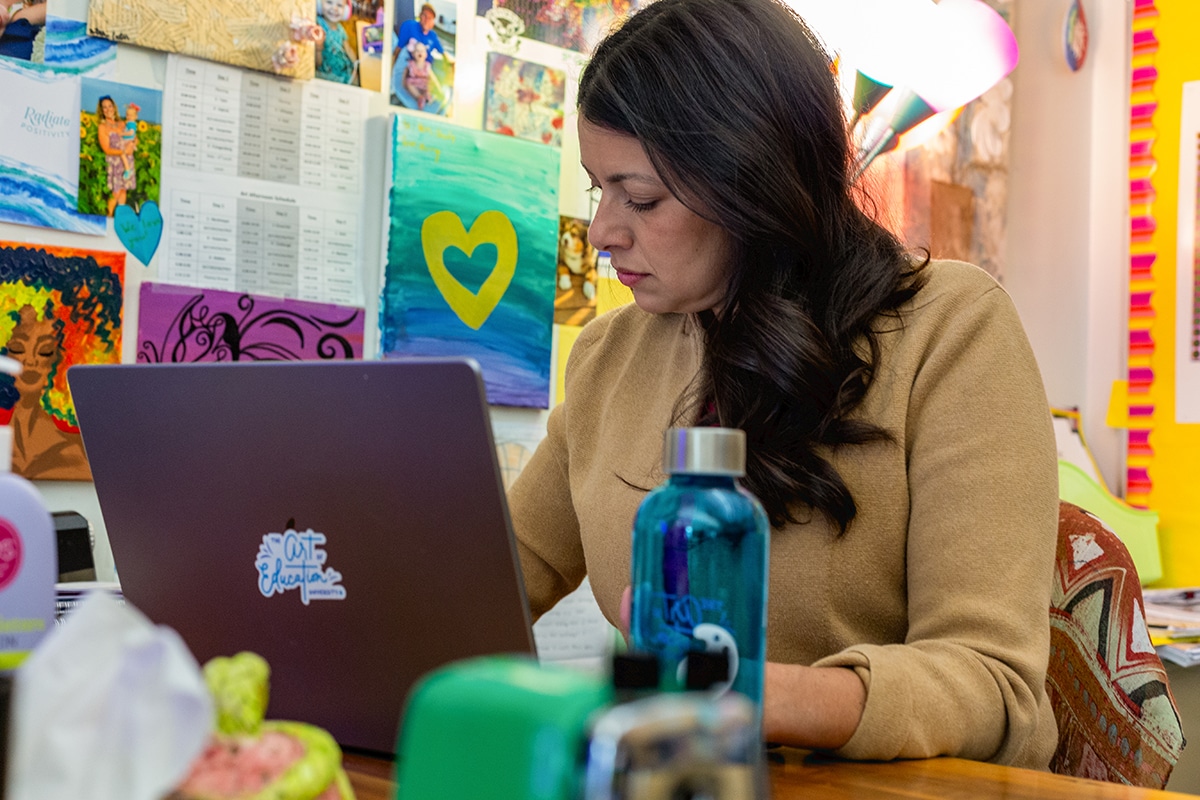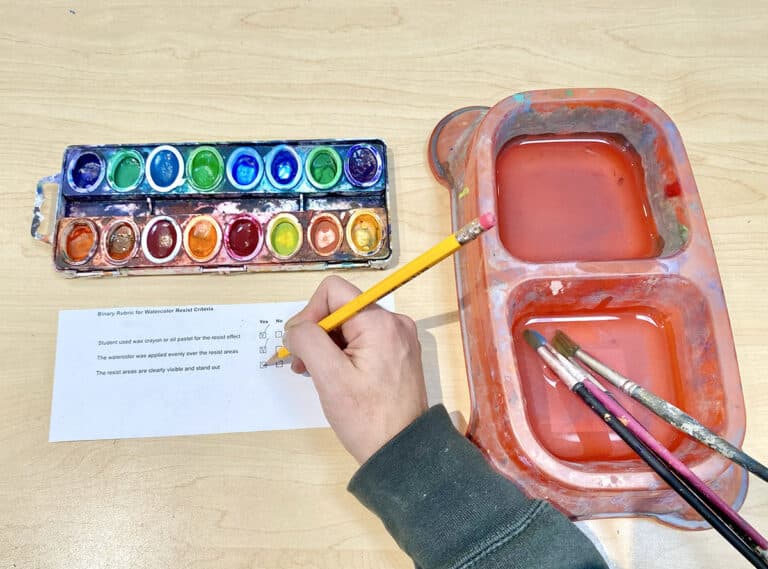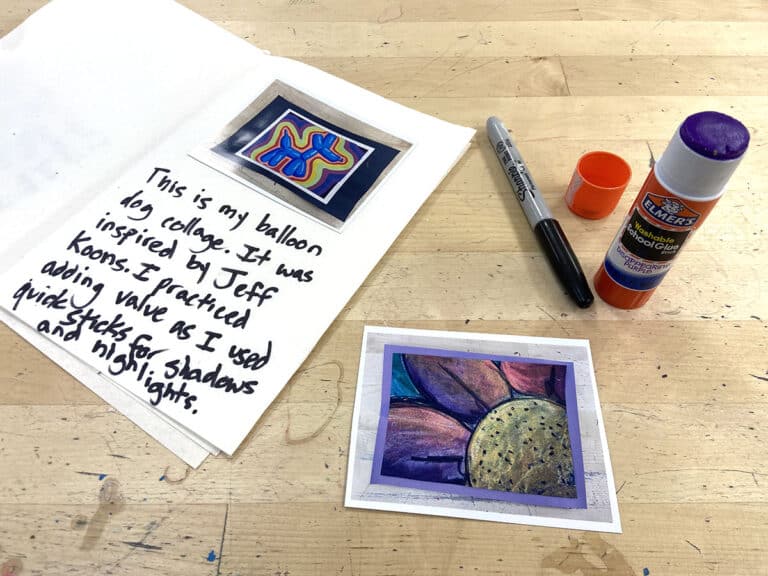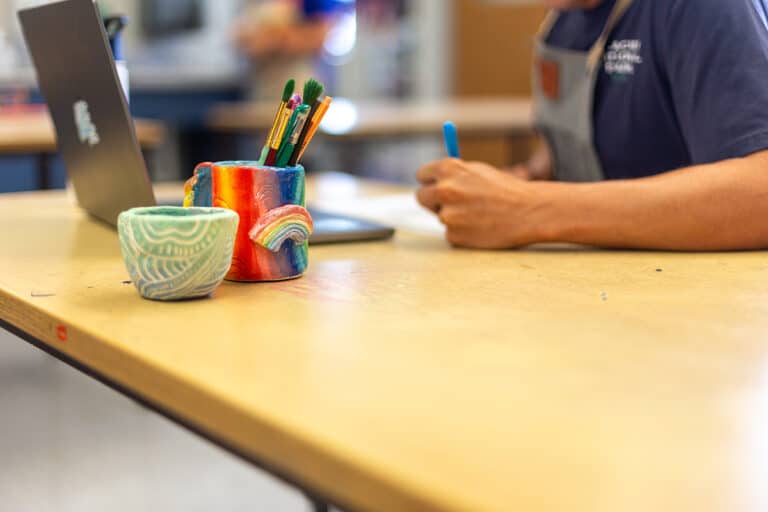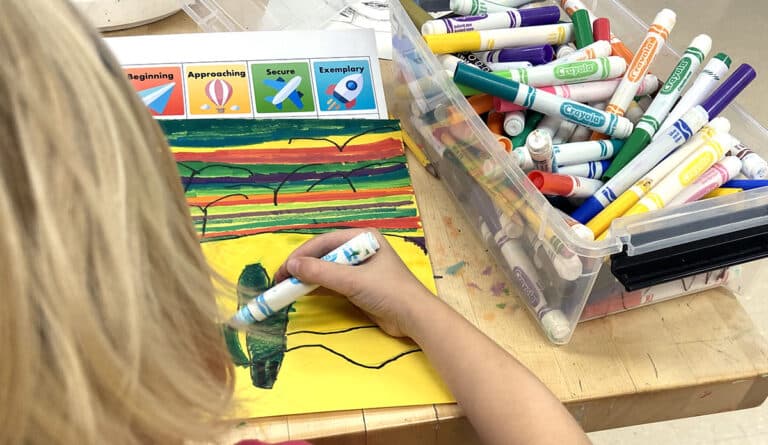Art teachers, by nature, are creative individuals. If you get excited about the creation aspect of teaching but you’re not so thrilled with the assessment part, you’re not alone. The key is to shift your mindset and remember that assessment is not a tedious process of scoring and record keeping. True assessment is providing feedback in order to help students grow. When you use assessment as a tool for learning, it demystifies art for students and gives them clear ways they can succeed in your art room.
Shift your mindset from grading to assessment and tackle how to use assessments as a tool for artistic growth.
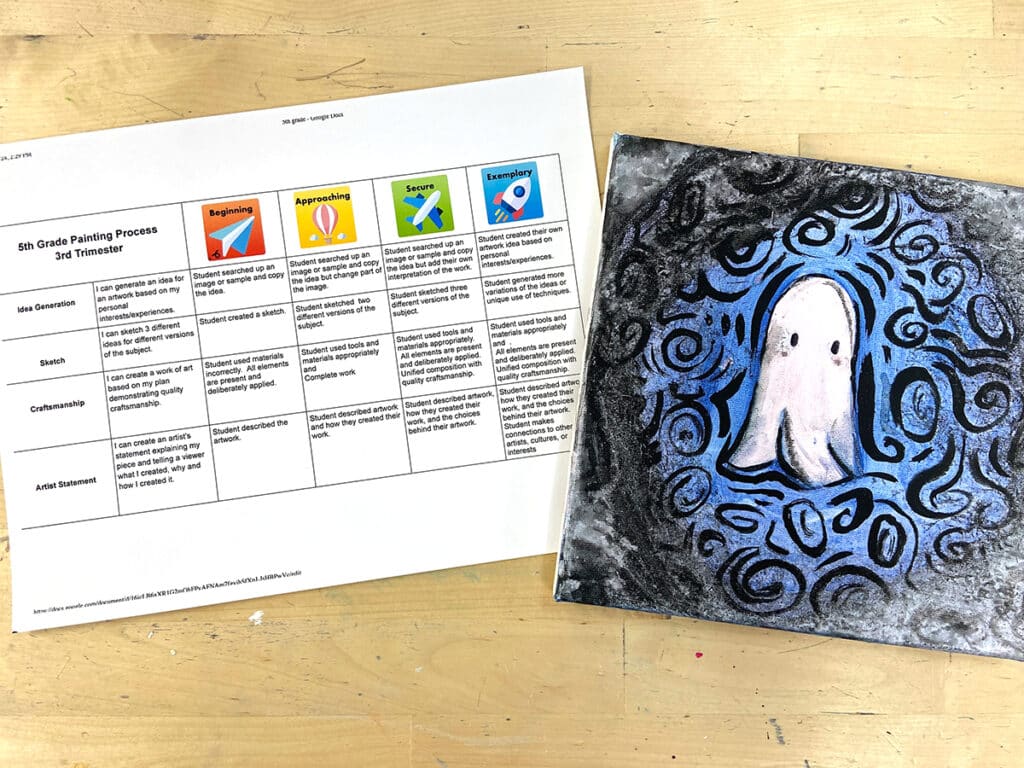
What are the different types of assessment?
Assessments generally fall into two categories: formative and summative. A formative assessment gathers data to determine current skill levels. Use it to help you gauge where students are at and when they’re ready to move on. Formative assessments tend to be lower stakes and are often carried out during a lesson. For example, while your students are studying value, a formative assessment would be a bellringer requiring students to create a value scale or shade a sphere. Their level of success in these quick drawing activities will indicate whether they are ready to tackle more complex forms or if they need some guided practice to review the basics.
Summative assessments come at the conclusion of a lesson or unit. The purpose of the summative assessment is to determine the student’s level of mastery. Summative assessments can take many forms, including tests, artist’s statements, and portfolio reviews. Summative assessments can often feel higher stakes as they are often more heavily weighted in the grade book.
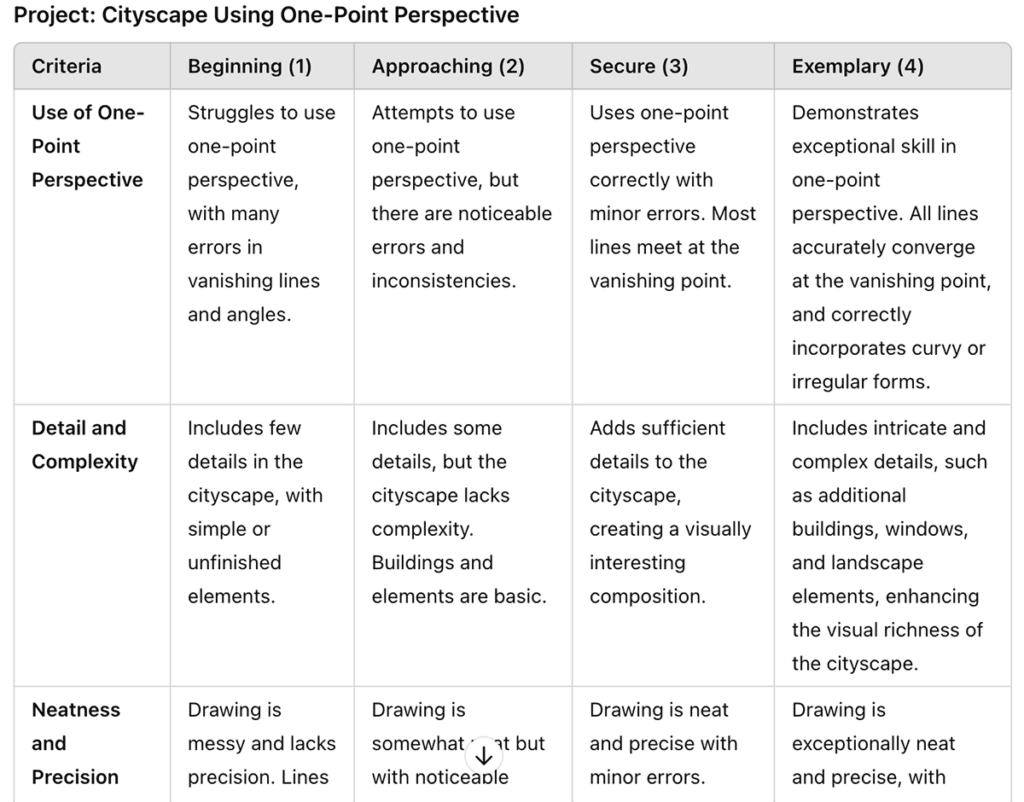
What should I put in my rubric?
Rubrics aren’t just for art projects! You can use rubrics to evaluate any objective or standard, including activities like bellringers, drawing exercises, small group discussions, or presentations of artwork. Whatever the purpose, a good rubric provides clear and specific criteria for success. Focus on observable skills aligned to your curriculum and state or national standards.
Rubrics can take a good amount of time to make if you’re starting from scratch. Save time and mental energy by using any of the numerous assessment tools in FLEX Curriculum. FLEX offers hundreds of student-facing resources including checklists, compare and contrast graphic organizers, reflections, project rubrics, and feedback sentence stems. One of the most flexible and customizable rubrics is the Plug n’ Play rubric. Click the Assessment tab on the lefthand navigation bar and filter by Grade Level, Medium, or Assessment Type—it’s seriously that simple!
How can I keep my assessment data organized?
There are a lot of ways to track student progress. Many districts provide an online grade book which may have features to track data and grades. For those without a digital grade book platform, digital spreadsheets can work just as well. Still, the most valuable data is the evidence you observe in student artwork, reflections, and skill demonstrations—not just the number from a rubric.
Consider photographing student projects in a digital portfolio or virtual gallery. It may sound time consuming, but even elementary students can handle it by themselves. A class gallery is a wonderful tool to see learning trends across the board and provide you with insights about your teaching.
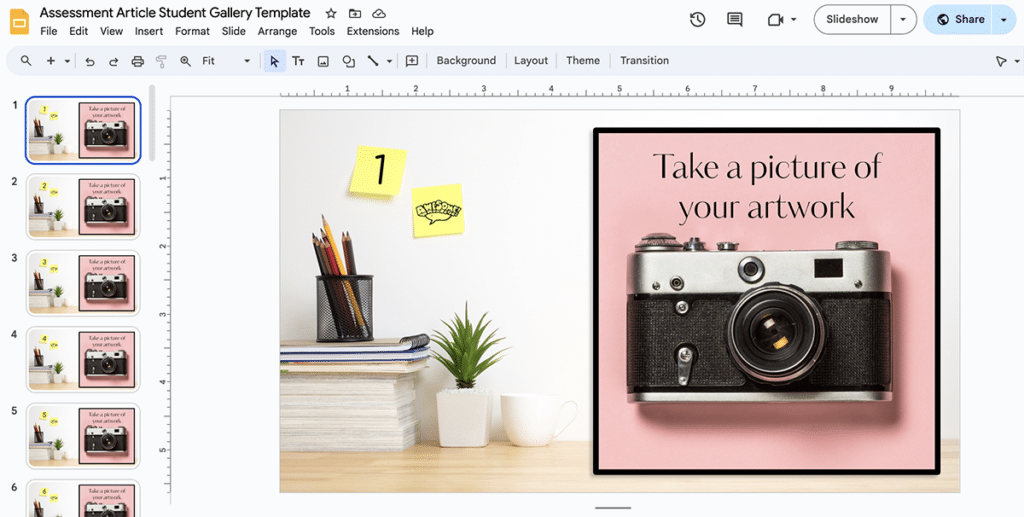
Creating digital portfolios and virtual galleries is simple. For a class-wide gallery, create a slide deck and number each slide. Share the slide deck with your students. They will snap a photo of their artwork and post it to their numbered slide. Individual portfolios allow for student privacy and show students their growth over time. Similarly, create a slide deck to use as a template. Notate spots on each slide for their artwork and artist statement. Share the slides using a forced copy link. Encourage students to have fun customizing their slide decks and share them with you! Consider linking each student’s deck in one spot so it’s easier to access.
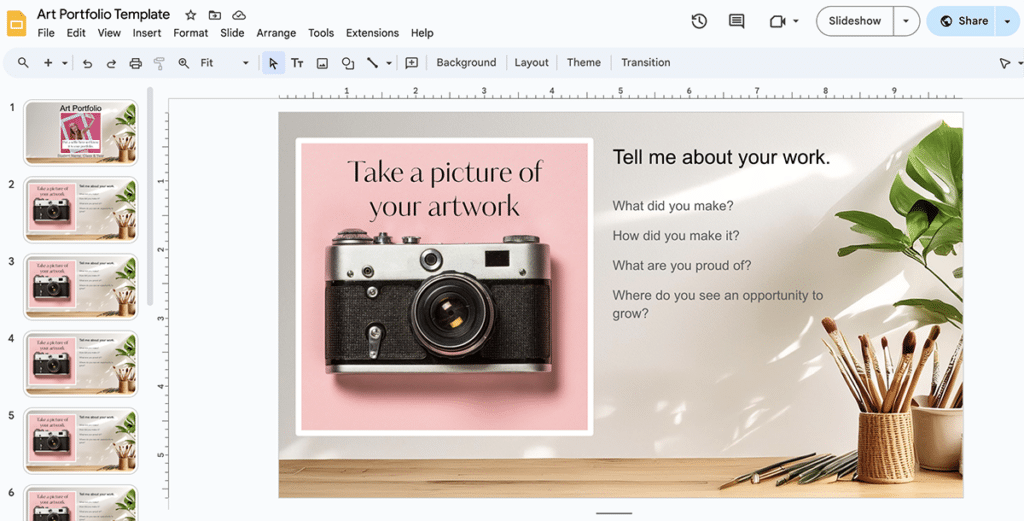
What do I do with the assessments?
If the goal of assessment is to help students grow, you must share the assessment data with your students. This will look different depending on your grade level. Young students won’t benefit from looking at a bunch of numbers on a rubric, but they will learn a lot if you give them each a one-minute “glow and grow” mini-conference. The important thing is that you provide students with timely feedback in words and a format they can understand.
What is my students’ experience with assessment?
Sometimes assessments can create pressure and anxiety for students. Many students get nervous thinking about everyone looking at and judging their work! Give students a voice in the assessment process to reduce anxiety. Talk to them about your goals as a teacher and ask them about their goals as artists and learners. When you are assessing students or discussing your observations with them, give students the opportunity to self-assess first with a rubric, artist statement, or conversation prompts. Often, they will be harder on themselves than you and it will provide space to give plenty of encouragement.
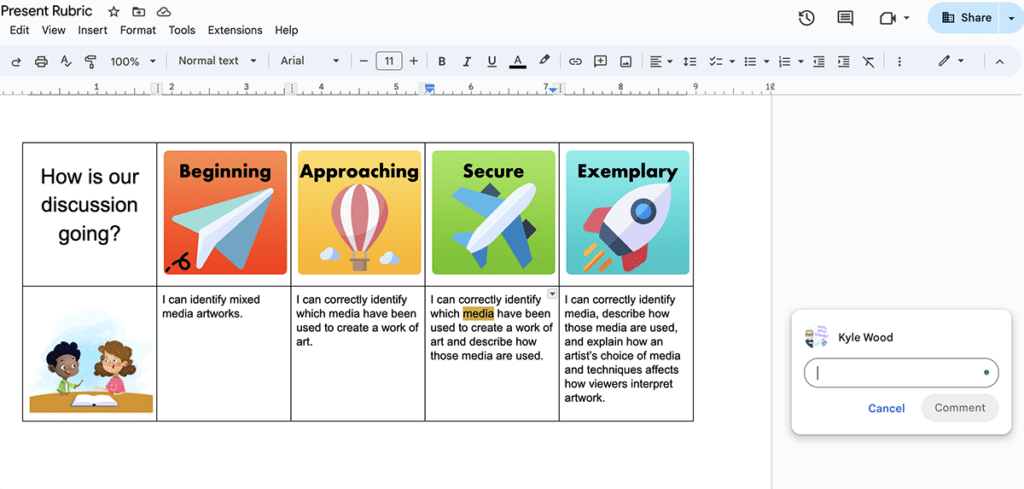
Assessment has a negative reputation but it can be a helpful tool for artistic growth and student connection. It’s important to assess students regularly to check for understanding of current concepts, determine what students are ready to learn next, and pinpoint areas of mastery. Shift the culture from grades to open feedback to relieve pressure and anxiety and promote excitement around discovery and development. Use ready-made resources from FLEX Curriculum to keep your rubrics clear, observable, and objective, while saving so much time. Embrace your newfound view on assessment to create a supportive learning environment that celebrates each stage in the artmaking process!
How do you track your students’ artistic growth?
What’s a successful way you share feedback with your students?
To continue the conversation, join us in The Art of Ed Community!
Magazine articles and podcasts are opinions of professional education contributors and do not necessarily represent the position of the Art of Education University (AOEU) or its academic offerings. Contributors use terms in the way they are most often talked about in the scope of their educational experiences.
